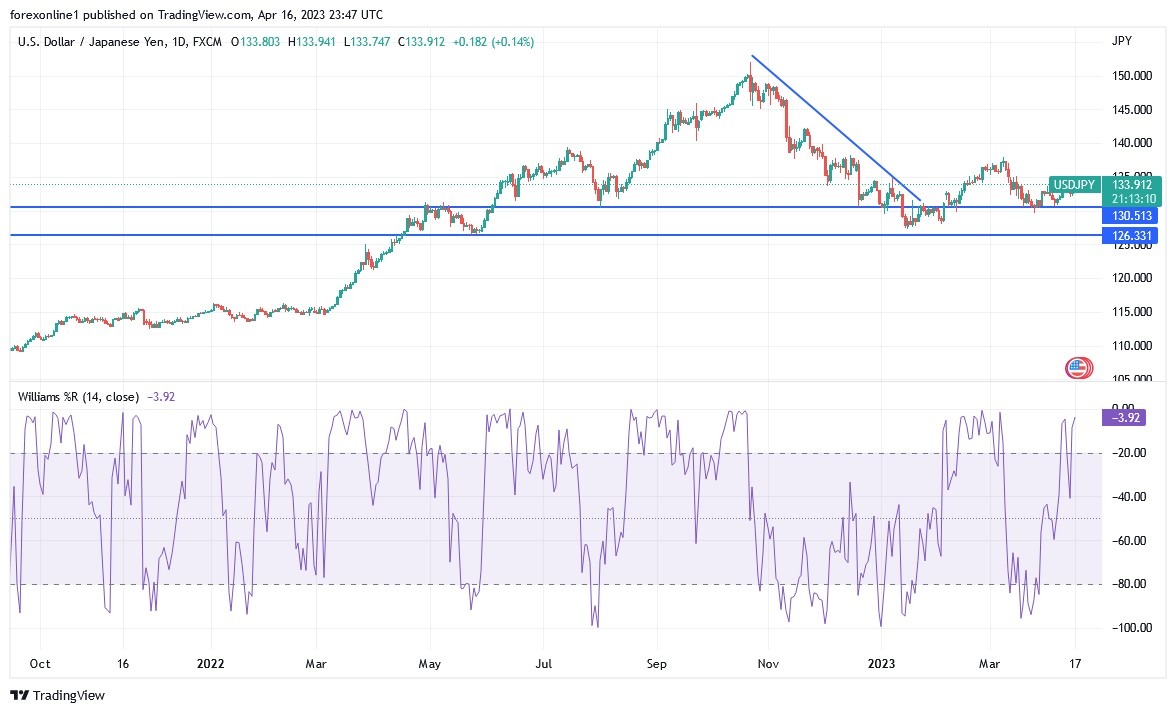- The US dollar rose and stocks fell after the release of US retail sales data, which came in far below expectations.
- Accordingly, the USD/JPY currency pair had a better chance to move towards the 133.83 resistance level at the end of last week's trading, with a stronger rebound from the support 132.00.
- The currency pair may open trading this week around its recent gains.
According to the official announcement, US retail sales fell by -1.0% on a monthly basis in March, exceeding expectations for a 0.4% decline, providing more evidence that the US economy is heading towards a reversal in growth. The dollar has typically fallen after bad economic news in recent weeks, with the thought that such results increase the odds of a Fed rate cut later in the year.
The forex foreign exchange market is notoriously treacherous and the dollar actually rose after the weak data. A look at the charts reveals that the dollar is up as the S&P 500 stock market drops, indicating that the currency has received a safe bid. Thus, the thinking is that a recession is bad for US stocks which in turn supports the dollar. Commenting on this, Joe Manimbo, senior market analyst at Convera, said: “While the data adds to the deterioration of dollar sentiment, the dollar could turn to a safe haven if the numbers affect risk appetite and spark broader concerns about global growth.”
Ryan Brandham, market analyst at Validus Risk Management, says the dollar may also find supply as positions are squared off after another rough week for the currency. "Excluding auto, gas and the control group, the numbers were stronger than expected, which may cloud the market reaction and potential positioning at the weekend by market participants," he added.
Excluding gas and autos, US retail sales fell -0.3% in the month ending in March, while core retail sales fell -0.8%, more than double expectations for a 0.3% decline. However, the outlook for the US dollar looks challenging with analysts at BNP Paribas today saying that the greenback is now on track to experience a long-term period of decline.
Calvin Tse, an analyst at BNP Paribas Securities Corp, says that even in the event of a global risk aversion event, the strength of the US dollar from safe-haven demand will be limited. The analyst notes that the US dollar rebounded in March as data began to show a slowdown in the US economy, which led to lower US real yields and severe curve pressures. He believes this, along with positive returns outside the US and a more hawkish European Central Bank, should spur a return of money by European and Japanese investors, who have been weighting US assets for most of the past decade. “Overall, this supports our longstanding hypothesis that we are at the beginning of a multi-year structural decline in the US dollar,” he added.
Technical analysis of the USD/JPY pair today:
In the near term, according to the performance on the hourly chart, it appears that the USD/JPY currency pair is trading within the formation of an ascending channel. This indicates a strong short-term bullish bias in market sentiment. Therefore, the bulls will be looking forward to rushing the current series of gains towards 133.978 or higher to the resistance 134.175. On the other hand, the bears will target short-term profits at around 133.551 or below at 133.207 support.
On the long run, and according to the performance on the daily chart, it appears that the USD/JPY is trading within the formation of an ascending channel. This indicates a significant long-term bullish bias in market sentiment. Therefore, the bulls will look to extend the current range of gains towards 135.31 or higher to the resistance 136.96. On the other hand, the bears will look to pounce on the gains at around 132.01 or below at the support at 130.25.
Ready to trade our Forex daily forecast? We’ve shortlisted the best Forex brokers in the industry for you.


